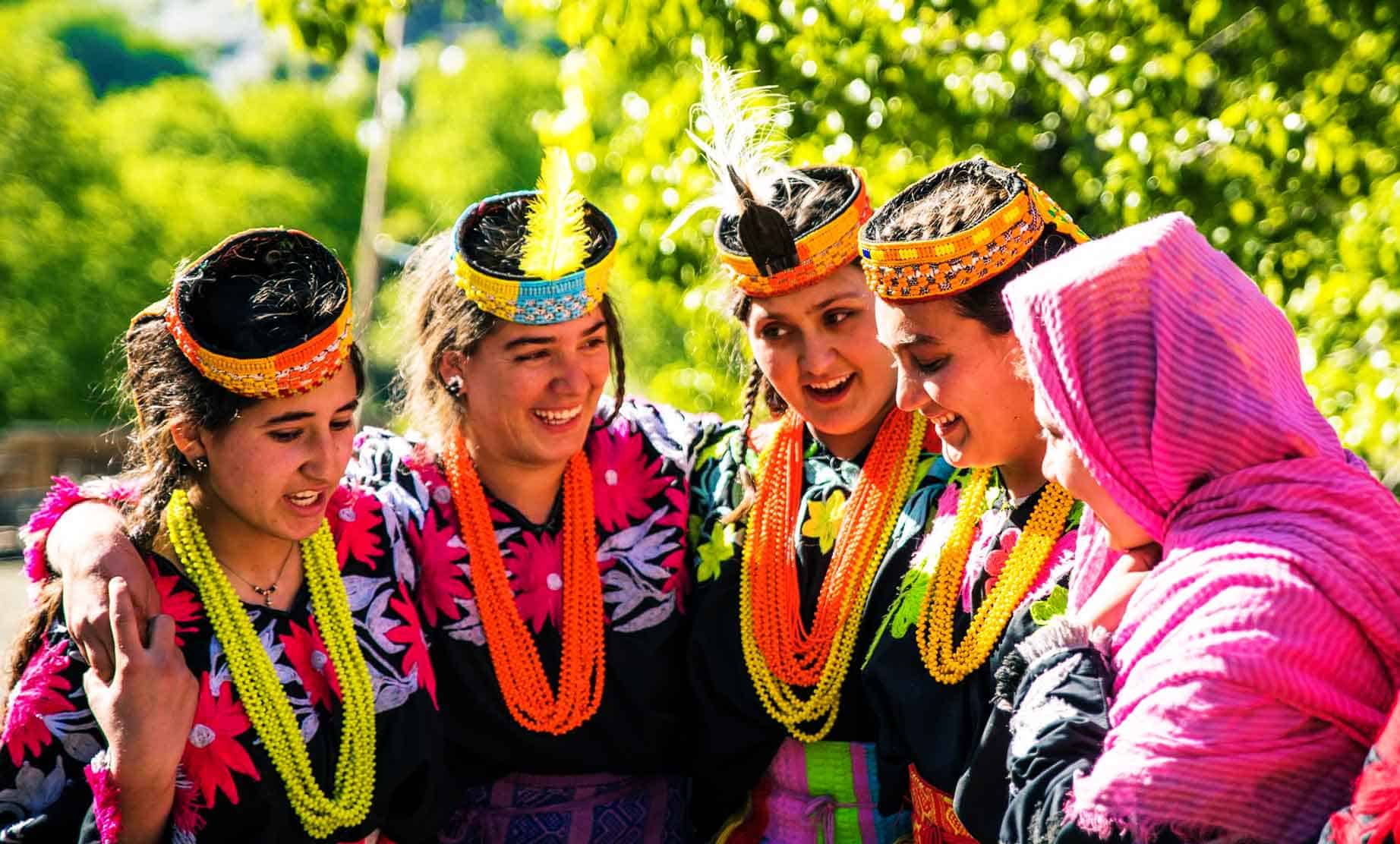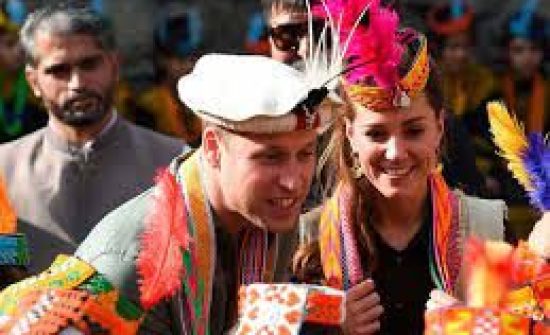The Kalash People
Chitral with the unique Kailash Valley (known as the Wearers of Black Robes) – a remaining minority of approximately 3500 people living in three isolated but beautiful valleys known as Bumburet, Rambur and Berir. The people of Kailash have a rich culture and are very headstrong about their identity. These people stand out from the remaining tribes, cultures and communities due to their distinct traditions, religious practices and festivals. The Kailash Valley boasts serene beauty, lush green valleys and fruit farms making it an ideal tourist spot in terms of not only scenic beauty but also cultural diversity and festivals/ceremonies. |
DAY 01:– Arrival in Islamabad transfer to hotel for short rest, afternoon half day city tour of Islamabad/Rawalpindi DAY 02:– Drive to Peshawar en-route visit Taxila archaeological site and museum, later continue drive to Peshawar O/N hotel DAY 03:– Half-day city tour of Peshawar, after lunch drive to Swat, en-route visit Takht-e-Bhai. Later continue drive Swat O/N hotel |
DAY 04:- Drive to Chitral (6-7 hours), after check-in city tour o/n hot DAY 05;- Full day tour of historical sites in Swat, O/N hotel. DAY 06:- Full day tour of Kailash valley, O/N hotel DAY 07:- Drive back to Islamabad, transfer O/N hotel DAY 08:– on ward flight |
Included
S# | DETAILS |
01 | Airport pick and drop |
02 | Accommodation bed & B.fast, twin bedroom in Islamabad and other cities standard air-condition rooms. |
03 | Flight Ticket or transportation from Islamabad/ Skardu/ Gilgit/chitral or from these cities to Islamabad |
04 | Skardu/Gilgit/Hunza Hotel (bed & breakfast) |
05 | Two nights in Chilas/ Besham hotel (bed & breakfast) incase of flight cancellation. |
06 | Jeeps Skardu/Askoli/ Hushe/ Skardu/shimshal/Chitral/Kalash or vice virsa. |
07 | Wages, insurance, food equipment of cook |
08 | Wages, insurance, food equipment of Assistant cook, |
09 | Wages, insurance, food of Porter Sirdar |
10 | Porter Payment, Low altitude porters. |
11 | Baggage,75 kg (going time) and 50 kgs (on return) for expedition 45 days or more and 25 kg for trekking group & trekking peak |
12 | Full board camp food during trek & at base camp. |
13 | Mess tent, Kitchen tent, store tent, table , chairs and kitchen equipment |
14 | Reconfirmation of international flight tickets. |
15 | Camping fees, road taxes & bridge crossing of expedition members & Porters. |
16 | Porters Equipments. |
17 | Assistance in obtaining climbing permit and other documentations |
18 | Briefing and debriefing in the Ministry of tourism |
19 | CKNP fee: US $ 150/per member |
20 | 1000 US$ guarantee pollution fee. |
21 | 200 US$ environmental protection fund. |
22 | Fuel, Tarpaulin, and Stove for porters. |
23 | Kerosene Oil for porter and Members |
24 | Toilet tent and shower tent |
25 | Members will have individual D-4 in Base camp tents, and mattress for expeditions more than one month |
26 | LO insurance or guide transport and hotel/ equipment and TA/DA. |
27 | Royalty fee and additional member fee |
Excluded
S.# | DETAILS |
01 | Sleeping bags, rucksacks and personal clothing. |
02 | Medication, ground evacuation and helicopter rescue (US$15,000) of any kind. |
03 | Room services, laundry charges, beverages and items of personal nature. Phone /communication |
04 | Climbing food beyond base camp, equipment, high altitude Porters wages bills. |
05 | Insurance or liability of any members. |
06 | Tip to staff |
07 | Custom clearing and forwarding agent’s charge. |
08 | Food & drinks during stay in hotel (City) |
09 | Transport to other cities or places out of itinerary |
10 | Custom clearing and forwarding agent’s charge. |
11 | Extra baggage charges during international or domestic flight |
12 | Insurance or liability of any members. |
❓ Frequently Asked Questions (FAQ) – The Kalash People, Kalash Valley
Q1: Who are the Kalash people?
A: The Kalash are an indigenous ethnic and religious minority living in theKalash Valleys(Bumburet, Rumbur, and Birir) in Chitral District, Pakistan. They are known for their distinct culture, polytheistic religion, colorful festivals, and unique dress.
Q2: What makes the Kalash culture unique?
A: The Kalash follow an ancient pagan belief system rooted in nature worship. They wear vibrant traditional clothes, celebrate seasonal festivals like Chilam Joshi, Uchal, and Chaumos, and maintain oral traditions passed down through generations.
Q3: Where is Kalash Valley located?
A: Kalash Valley is located in the Hindukush Mountains of Chitral District, in the Khyber Pakhtunkhwa province of northern Pakistan. The area borders Afghanistan’s Nuristan region.
Q4: Are the Kalash people related to Greeks?
A: There is a popular theory (though unconfirmed) that the Kalash are descendants of Alexander the Great’s soldiers, which has drawn global interest. However, their true origins remain debated among historians and genetic researchers.
Q5: What language do the Kalash speak?
A: The Kalash speak the Kalasha language, which is part of the Dardic group of the Indo-Aryan languages. It is considered endangered and is spoken alongside Khowar (the regional language).
Q6: Can tourists visit the Kalash Valleys?
A: Yes, foreign and local tourists are welcome. The Kalash are known for their hospitality. Visitors often come during festivals, but respectful behavior and cultural sensitivity are highly encouraged.
Q7: When is the best time to visit the Kalash Valleys?
A: The best time is during spring (May – Chilam Joshi Festival) or autumn (December – Chaumos Festival). These seasons offer vibrant cultural experiences, music, dance, and traditional rituals.




